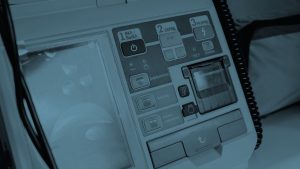
Added to chest compressions, automated and semi-automated defibrillators are virtually the only treatment capable of reducing cardiac arrest mortality.
Over the past decades, these devices have been widely deployed for public access as well as for healthcare and emergency professionals, both medical and non-medical. However, their accessibility remains limited in daily setting. Firstly, many defibrillators are not or are insufficiently geolocated, preventing Emergency Medical Services (EMS) from guiding a first responder to the nearest device. Secondly, many defibrillators are not accessible 24/7. Lastly, in most countries, there are no robust plans for their maintenance. To ensure efficiency, both the defibrillator itself and its batteries and electrodes need regular checking. The alert rate for actual or potential malfunctions is estimated at 1 per 100 defibrillator-years. These malfunctions compromise defibrillators effectiveness. Due to the increasing number of defibrillators, preventing such malfunctions becomes a true priority.
Significant progress has been made to increase the accessibility of early defibrillation by multiplying the number of defibrillators (in France, the number of defibrillators has more than doubled in five years), by registering them in a national database (Géo’DAE), and by using various apps guiding citizen rescuers both, to the patient in cardiac arrest and to the nearest defibrillator.
Evidently, further progress can be made by continuing the deployment of defibrillators, improving the completeness of registers, and increasing the number of citizen rescuers. However, such investment is meaningful only if 100% of defibrillators are fully operational at anytime. Many of early deployed defibrillators are aging and have never been serviced. Numerous defibrillators are installed outdoors in non-temperature-regulated boxes, making the electrodes particularly vulnerable to extreme temperatures that can permanently damage the conducting gel that coats them. The challenge of deploying defibrillators is currently on its way to being met. Now, we are facing an equally important challenge: maintaining the fleet of defibrillators in a state of readiness.
Public Access Defibrillators: Urgent Need to Keep them Alive – PubMed (nih.gov)






